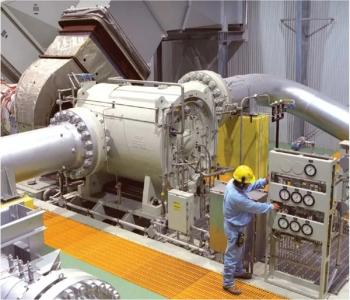
Component and cartridge seals
A component seal is a seal design where many of the components are provided as loose, individual parts. These seals are often supplied by the seal OEM with all of the parts provided in one box. This makes the job of identifying the required components easier for the end user. In other cases, however, the end user may stock the components for multiple seals as individual components which allows for greater flexibility in changing materials or for only replacing specific components during a seal repair.
A component seal was the most commonly supplied seal design when mechanical seals were first adopted by industry. Mechanical seals were seen as a direct replacement for packing. Most pump OEMs considered the mechanical seal as only a sealing device that would simply install into the stuffing box and be mounted onto a pump sleeve and into a pump gland. The loose components would arrive at the pump OEMs facility and be installed as part of the pump assembly.
This article contains excerpts from the paper, "Best practices for cartridge mechanical seal installations" by Michael Huebner of Flowserve Corporation.
One of the greatest challenges with component seals is that the success of the installation is greatly impacted by the skill of the installer and processes used during installation. In a pump OEM environment, there is a higher likelihood that there will be skilled technicians and a clean environment during installation. To install a component seal, the pump often had to be partially assembled, lines scribed on sleeves, offsets measured, components tightened, gaskets installed, and glands bolts tightened.
During the process, the seals, especially the seal faces, must have been kept clean and free from contamination. While this process was largely successful at the OEMs facility, there were significantly greater challenges and a lower success rate at end user’s facilities or in the field. Component seals continue to be a very large market segment for many seal OEMs although they are primarily used in lower duty services and often in less critical applications. Some highly engineered component seals are still used in equipment where the physical constraints of the equipment design require an extremely small seal or the seals must be integrated into the pump design. Cartridge Seals
Cartridge seals were introduced to reduce the complexity of the seal installation process and to improve the reliability of the seals in service. A cartridge seal is a design where all of the critical seal components are pre-assembled at the factory. This provides the most controlled environment for the seals during assembly. Rather than receiving a box of loose components, the end user would receive a fully assembled seal. By making the adaptive components part of the cartridge assembly, the location of the seal parts, the size and location of the required porting, the mating surfaces for gaskets, and the general design of the seal could be optimized for seal performance.
As a further benefit, the cartridge seal assembly could be tested to ensure that a defined a level of quality was provided to the purchaser. The cartridge seal is designed to mate with the pump seal chamber and shaft and, in theory, should be a simple bolt-on component. This is, in fact, the way many end users view seal installations. This is often reinforced by the industry when people discuss how easy it is to install a mechanical seal – “pull out the old seal, stick in the new seal.”
Unfortunately, this statement often turns out to be true. Some end user mechanics have become very adept at quickly changing out seals that fail frequently. What is not considered is that seals can fail frequently because they are changed out too quickly. More specifically, the end users may not follow the best practices for installing a mechanical seal and therefore compromise the performance of the seal before it is even put into service.
Newsletter
Power your knowledge with the latest in turbine technology, engineering advances, and energy solutions—subscribe to Turbomachinery International today.





